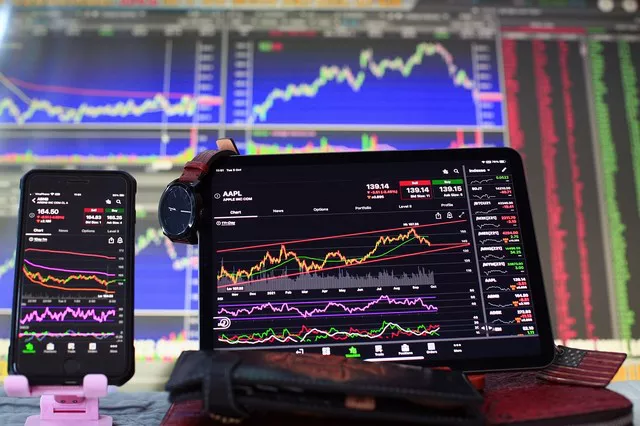Investors seeking to diversify their portfolios and capitalize on the potential price movements of silver often turn to silver futures. Silver futures are financial contracts that allow investors to buy or sell a specified amount of silver at a predetermined price on a future date. This derivative instrument provides an avenue for traders to hedge against price volatility and speculate on the future direction of silver prices. Understanding the intricacies of how to buy silver futures is crucial for those looking to navigate the commodities market successfully.
The Basics of Silver Futures Trading
Before delving into the process of buying silver futures, it’s essential to comprehend the fundamentals of futures trading. Futures contracts represent agreements to buy or sell an asset, in this case, silver, at a predetermined price at a future date. Investors can enter into these contracts to either hedge against price fluctuations or speculate on potential market movements. The key features of silver futures include standardized contract sizes, expiration dates, and margin requirements.
Selecting a Brokerage Platform for Silver Futures
The first step in buying silver futures is to choose a reliable brokerage platform that offers futures trading services. Not all brokers provide access to commodities futures, so it’s crucial to select one that specializes in this area. When selecting a brokerage, consider factors such as commission fees, margin requirements, trading tools, and customer support. Many reputable online brokers cater to both novice and experienced traders, offering a user-friendly interface along with advanced trading features.
Understanding Silver Futures Contracts
Silver futures contracts come in various sizes and specifications, and it’s important to choose the one that aligns with your investment goals and risk tolerance. The most commonly traded silver futures contract is the standard 5,000-ounce contract. Each futures contract has an expiration date, indicating when the agreement will be settled. Traders can choose contracts with different expiration dates, allowing for flexibility in their trading strategies.
See Also: How to trade gold futures on td ameritrade?
Risk Management and Margin Requirements
Successful futures trading requires a sound risk management strategy. As silver futures involve leverage, traders must maintain a margin account with their brokerage. The margin is a deposit that serves as collateral, allowing investors to control a more substantial position than their initial investment. Understanding margin requirements is crucial, as it involves both the initial margin, required to open a position, and the maintenance margin, necessary to keep the position open. Traders should carefully assess their risk tolerance and set stop-loss orders to mitigate potential losses.
Analyzing Silver Futures Market
To make informed decisions when buying silver futures, investors must conduct thorough market analysis. Fundamental analysis involves assessing factors such as supply and demand, geopolitical events, and economic indicators that may impact silver prices. Technical analysis, on the other hand, focuses on historical price patterns and market trends. Utilizing both approaches can provide a comprehensive view of the market and assist traders in making well-informed decisions.
Placing a Silver Futures Trade
Once you have chosen a brokerage platform, selected an appropriate contract, and conducted market analysis, it’s time to place a silver futures trade. Traders can go long (buy) or short (sell) silver futures contracts based on their market outlook. It’s essential to enter the correct order type, specifying the number of contracts, expiration date, and any additional conditions. Market orders execute immediately at the current market price, while limit orders allow traders to set a specific entry price.
Monitoring and Managing Silver Futures Positions
After initiating a silver futures trade, monitoring the position is crucial for successful trading. Market conditions can change rapidly, and staying informed about news, economic indicators, and geopolitical events is essential. Traders should regularly assess their positions, considering adjustments or closing out positions if market conditions warrant. Implementing risk management techniques, such as trailing stops, can help protect profits and minimize potential losses.
Rolling Over or Closing Silver Futures Contracts
As the expiration date of a silver futures contract approaches, traders must decide whether to roll over the contract or close it out. Rolling over involves closing the current position and simultaneously opening a new one with a later expiration date. This process allows traders to maintain exposure to the silver market while avoiding physical delivery of the commodity. Alternatively, if a trader wishes to take physical delivery of the silver, they can choose to close out the contract before expiration.
Tax Implications of Silver Futures Trading
Understanding the tax implications of silver futures trading is crucial for investors. Profits and losses from futures trading are subject to capital gains tax, which may vary depending on the duration of the investment. Traders should consult with a tax professional to ensure compliance with tax regulations and to optimize their tax strategy. Keeping accurate records of all transactions, including trades, deposits, and withdrawals, is essential for tax reporting purposes.
Conclusion
Buying silver futures can be a rewarding investment strategy for those looking to diversify their portfolios and capitalize on the potential price movements of silver. By understanding the basics of futures trading, selecting a reliable brokerage platform, conducting thorough market analysis, and implementing effective risk management strategies, investors can navigate the complexities of the commodities market successfully. As with any investment, continuous learning and staying informed about market trends are key to making informed decisions and achieving long-term success in silver futures trading.

